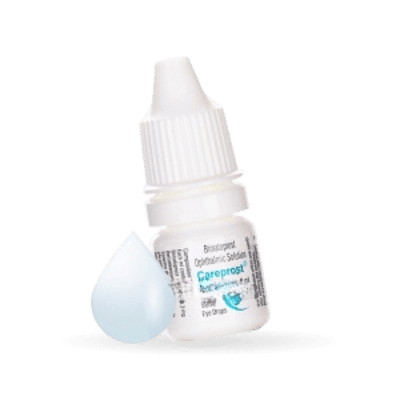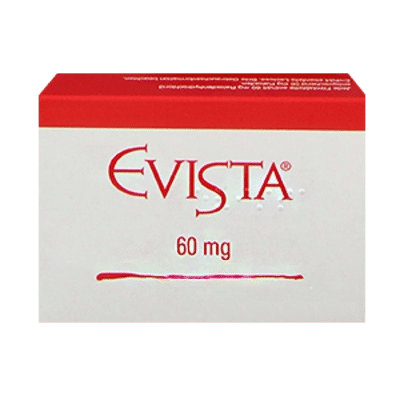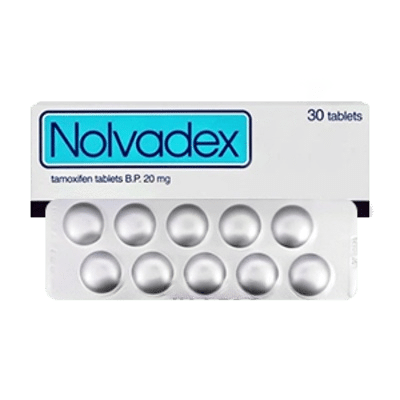I have been using Careprost for several months now, as recommended by my doctor, to reduce my intraocular pressure. The drug really helps, the pressure has stabilized, and I feel much calmer. A bonus was the noticeable growth of eyelashes, which is also very nice.

Careprost - Bimatoprost
Active ingredients: Bimatoprost- Quality products
- Support 24/7
- Fast delivery
What is it?
Careprost is an ophthalmological drug containing the active substance bimatoprost. It is used to treat increased intraocular pressure, which can occur in conditions such as ocular hypertension and open-angle glaucoma. Increased pressure inside the eye is dangerous because it can lead to damage to the optic nerve and deterioration of vision, up to its loss.
Careprost helps to reduce intraocular pressure by increasing the outflow of intraocular fluid. Due to this, the drug prevents the development of glaucoma and reduces the risk of deterioration of vision. Although Careprost was initially developed as a drug for the treatment of eye diseases, it also gained fame due to its side effect – stimulation of eyelash growth, which led to its popularity in the cosmetic field. However, its main purpose is the treatment of eye pathologies.
Composition
Careprost contains the active substance bimatoprost, which is a synthetic analogue of prostaglandin. Bimatoprost acts on special receptors in the eye, promoting the outflow of intraocular fluid, which leads to a decrease in intraocular pressure. In addition to bimatoprost, the solution contains excipients that ensure the stability and safety of the drug:
- Benzalkonium chloride is a preservative that prevents the growth of bacteria and fungi in the solution.
- Sodium phosphate is a buffer substance that maintains the optimal pH of the solution.
- Citric acid is used to regulate acidity.
- Sodium chloride helps maintain the osmolarity of the solution so that it is safe for the eye.
- Distilled water serves as the basis for the solution and ensures its liquid form.
This balanced composition makes Careprost effective and safe when used correctly, both for the treatment of eye diseases and for additional cosmetic use.
How to use?
Correct use of Careprost is essential to achieve the desired therapeutic effect and minimize the risk of adverse reactions. The instructions for use must be strictly followed and include the following steps:
- Before using the drug, wash your hands thoroughly to avoid getting dirt or bacteria into your eyes.
- While sitting or lying down, gently pull down your lower eyelid to create a small pocket.
- One drop of Careprost is instilled into this pocket once a day, preferably in the evening. After instillation, close your eyes for a few seconds to allow the solution to spread evenly over the surface of the eye.
- If you use contact lenses, remove them before using the drops. Lenses may be inserted no earlier than 15 minutes after instillation.
- Do not touch the tip of the pipette to your eyelids, eyelashes or other surfaces to avoid contamination of the solution.
It is important not to exceed the recommended dose, as this will not increase the effectiveness of the drug, but may increase the risk of side effects.
How does it work?
Careprost works due to the active substance bimatoprost, which is an analogue of natural prostaglandin. Bimatoprost affects receptors located in the tissues of the eye, increasing the outflow of intraocular fluid through the trabecular meshwork and reducing intraocular pressure. This is especially important in the treatment of glaucoma and ocular hypertension, since increased pressure inside the eye can damage the optic nerve and lead to irreversible vision loss.
The drugs action begins gradually, reaching its maximum effect after several weeks of regular use. Due to this reduction in pressure, Careprost helps prevent further damage to the optic nerve and preserve vision. In addition, the side effect of the drug - stimulation of eyelash growth - is associated with the effect of bimatoprost on the eyelash follicles, which makes them longer, thicker and darker.
Indications
Careprost is primarily prescribed for the treatment of diseases associated with increased intraocular pressure. Its use is recommended in the following cases:
- Open-angle glaucoma is a chronic disease in which increased intraocular pressure damages the optic nerve, which can lead to progressive vision loss.
- Ocular hypertension is a condition in which intraocular pressure is higher than normal, but there has not yet been damage to the optic nerve or changes in the visual field, as in glaucoma.
- Prevention of increased intraocular pressure in patients at risk of developing glaucoma, especially in the presence of a hereditary predisposition.
Although the main area of application of Careprost remains ophthalmology, it is sometimes prescribed for cosmetic use, but this should be under the supervision of a doctor to avoid possible complications.
Contraindications
Careprost, despite its effectiveness, has a number of contraindications that must be taken into account before starting its use. It is not recommended to use the drug in the following cases:
- Allergy or hypersensitivity to bimatoprost or any of the auxiliary components of the drug.
- Pregnancy and breastfeeding, since the safety of using Careprost during these periods has not been established.
- Infectious or inflammatory eye diseases, such as conjunctivitis, keratitis, so as not to aggravate the course of the disease.
- Conditions accompanied by a violation of the integrity of the cornea or eye surgery, since in these cases the use of the drug can cause complications.
- Age under 18 years, since the effectiveness and safety of the drug in children and adolescents have not been studied.
Before starting to use Careprost, be sure to consult a doctor to exclude possible contraindications and minimize health risks.
Side effects
Like all medications, Careprost can cause side effects, although not everyone gets them. The most commonly observed side effects include:
- Redness of the eyes - the most common reaction is related to irritation of the mucous membrane of the eye.
- Itching and dryness of the eyes, which may be accompanied by a feeling of sand in the eyes.
- Darkening of the skin around the eyes - this effect is due to the drugs effect on melanocytes, the cells responsible for pigmentation.
- Darkening of the iris of the eye, which can lead to a permanent change in eye color with prolonged use.
- Increased eyelash growth, which, although a desirable effect for some users, may be undesirable for others.
If any unwanted symptoms occur, it is recommended to consult a doctor to assess the need for continued treatment or dosage adjustment.
Frequently asked questions
Careprost Reviews and Experiences
The drug was recommended by a friend who was treated for glaucoma. Now I also use Careprost to reduce eye pressure. At first I was afraid of possible side effects, but fortunately everything went smoothly. I am very happy with the result, and even my eyelashes have become thicker!
After diagnosing glaucoma, the doctor prescribed Careprost. The effect was not long in coming - the pressure dropped to normal. The drug is easy to use, and I did not notice any side effects, except for the lengthening of the eyelashes.









